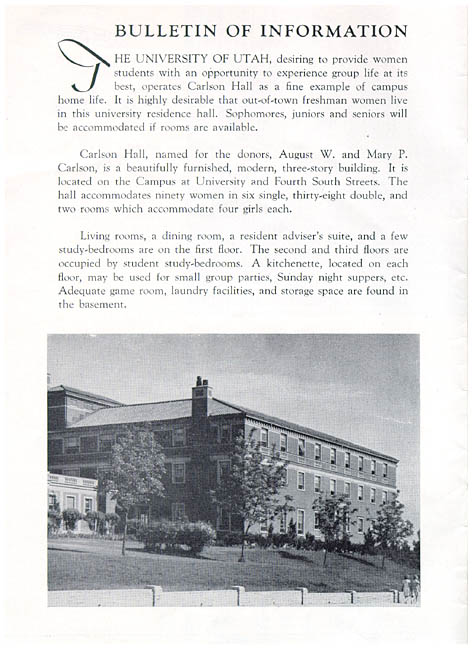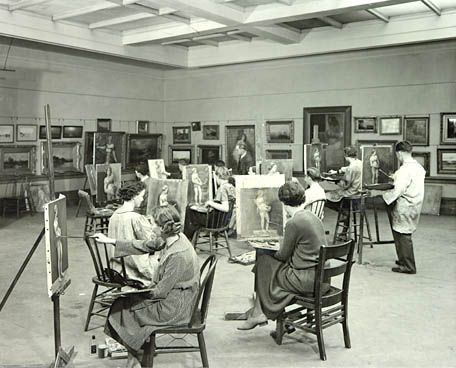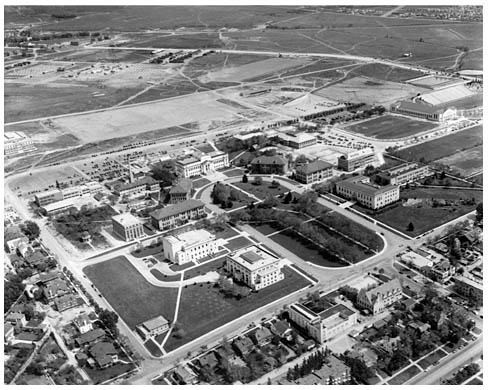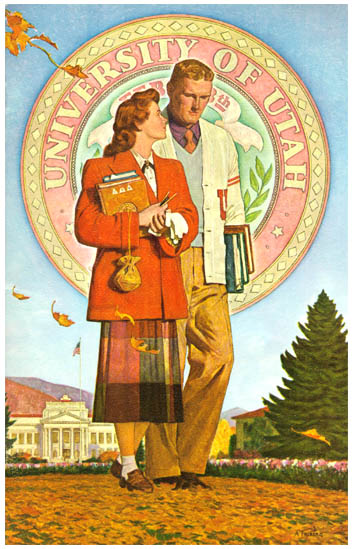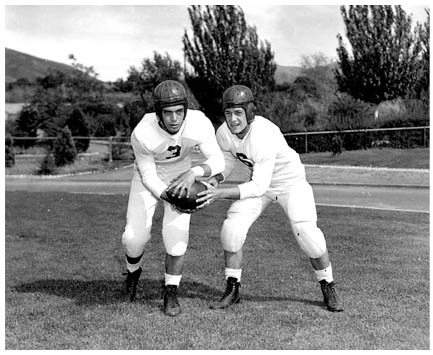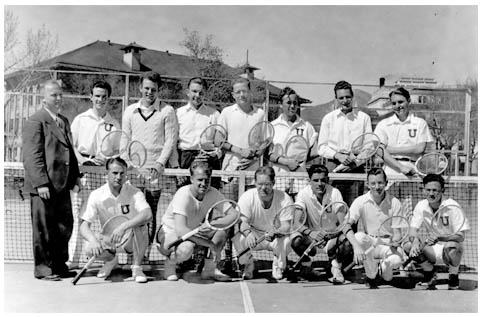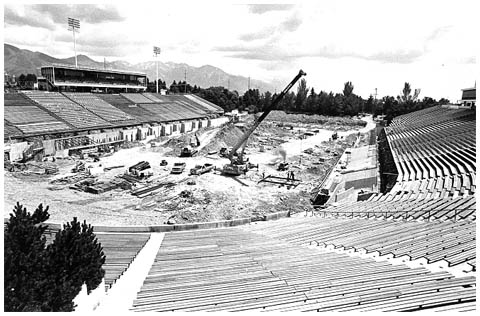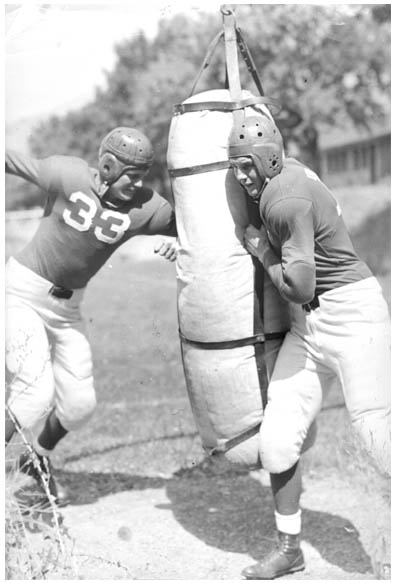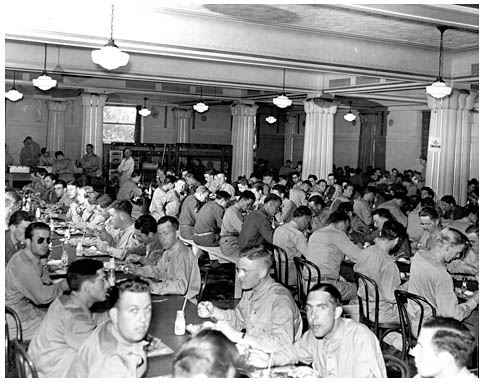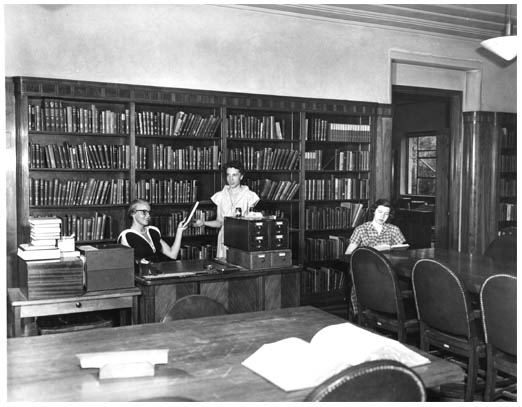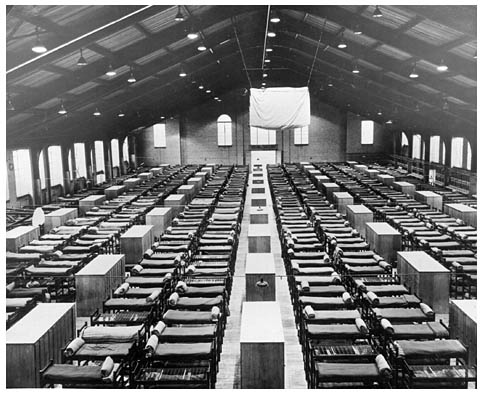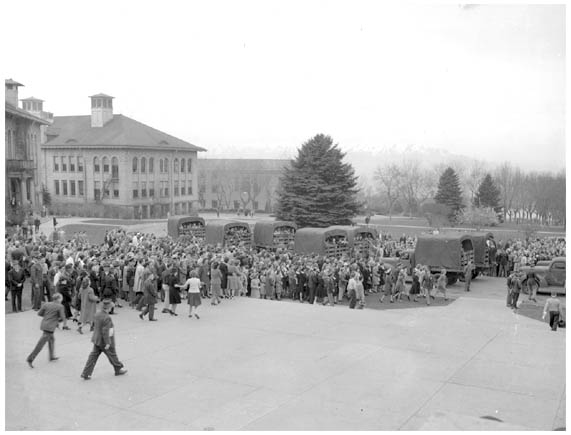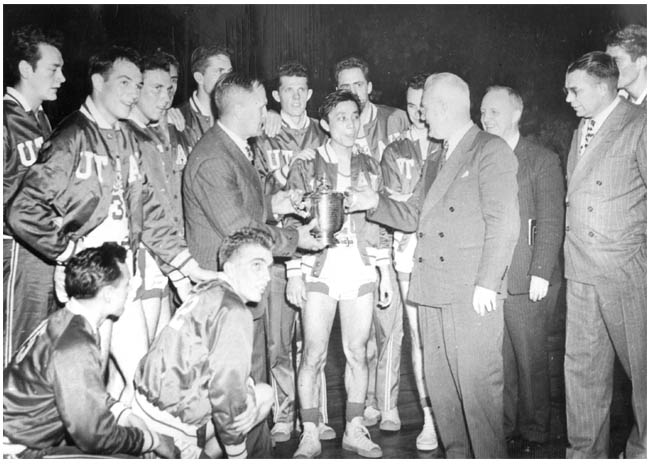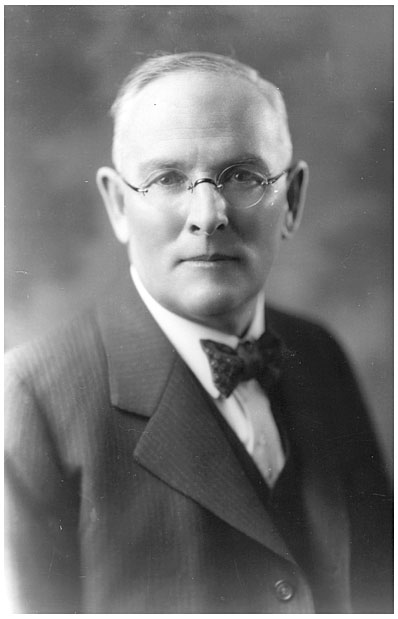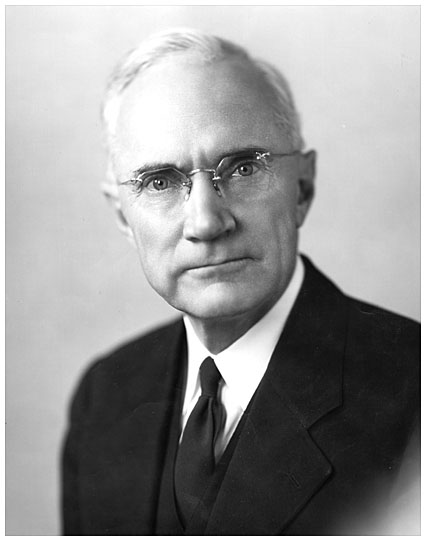801-585-3073
University of Utah Sesquicentennial, 1850 - 2000
- Bonneville Salt Flats/Utah Motorsports
- Images of Glen Canyon
- Japanese-American Photo Archives
- Quinney Outdoor Recreation Exhibits
- University of Utah History
- Utah Centennial 1896-1996 - A Photo Exhibit
- Utah Inter-Urban Railway History in Photographs
- Working Together: A Utah Portfolio
The Great Depression and World War II

At the end of the 1920s, the University of Utah, under the confident leadership of Dr. George Thomas, seemed poised for a happy period of expansion and growth. Then the stock market crashed in October, 1929, triggering the Great Depression and changing that rosy prospect to a fight for survival. Impacts came from every direction: parents of students at the University could no longer afford tuition and books; the state legislature, faced with lower tax revenues, cut the University's budget; and many banks which had financial dealings with the University were forced to close. Faculty salaries were frozen, contracts were not fulfilled, and for the first time, enrollment dropped. But with intense hard work by President Thomas, and with the aid of federal work programs, the University was able to reverse the trend and overcome the effects of the Depression.
In 1934, the University received another 61 acres of land from Fort Douglas. The building program, suspended at the height of the emergency, was resumed using W.P.A. labor. Soon the campus resounded to the sounds of construction; the School of Mines building, Kingsbury Hall, the Engineering Building, the Union Building were all completed or nearly so by 1931, and more were soon to follow. Not all construction on the campus was for noble academic halls; land was leveled and landscaped, a sprinkler system was installed for lawns, several miles of curb and gutter were completed, campus roads were extended, leveled, and paved, new gas, steam, and power lines were laid, and a new culinary water well drilled on the south end of the campus which soon became known as the Fountain of Ute. For years the University library had been moved from one building to another, never having a purpose-built structure to call home. This was rectified in 1935 by the opening of the George Thomas Library, named in honor of President Thomas' many accomplishments. The new library was built by W.P.A. workers and contained 124,000 volumes. Even that wasn't the end of the building program; Carlson Hall, a dormitory for women, was opened in 1938, and the Einar Nelson Field House was completed in 1940.
The academic position of the University was constantly improved under President Thomas as well; enrollment, after a slump in the early 1930s, picked back up again, and a Phi Beta Kappa chapter was installed in 1935. Two years later, the Graduate School of Social Work was organized. There were other things in life besides school, too; in 1938, the football team played in its first bowl game, defeating the University of New Mexico in the Sun Bowl. Several faculty members and deans who had been with the University since the 1890s retired or passed away, such as Andrew Love Neff, Frederick W. Reynolds, Frederick J. Pack, and Maud May Babcock. This changing of the guard culminated when President Thomas announced his retirement, effective November 15, 1941. He was replaced by Dr. Leroy E. Cowles, the newly- appointed Dean of Education.
But just as things were back on track, the intensifying world crisis reached out to touch the University of Utah. By the summer of 1940, it was obvious to many that there was a good chance the United States would be drawn into the wars then raging in Europe and Asia. The University responded by participating in the R.O.T.C. program, the Air School, wherein prospective pilots could finish all their ground courses at the University, and entering the National Defense Training Program. The new President immediately set up faculty and administrative committees to deal with a host of new problems: air raid precautions, an influx of men in uniform, the loss of many students and some faculty to the armed services, and many others. The immediate effect was another drop in enrollment of almost twenty percent. Responding to military requests, the University began courses in meteorology and photography. The Army, having filled up the buildings at Fort Douglas, reversed the trend and leased office space in the Park Building for the duration of the war.
In 1943, the University activated the Army Specialized Training Program, or A.S.T.P. This program taught basic engineering, languages, medicine and dentistry to about 1,100 men on campus.
At the same time, the basic work of the University, crowded though it was, went on. Women enrolled in higher than ever numbers, somewhat offsetting the loss of male students to war industries and the armed services. The Medical School changed to a four-quarter system, allowing doctors to complete their training in three years instead of four, and after much debate, the program was expanded to four years in 1944. Requirements and curriculum were adapted to the needs of a nation geared up for total defense by granting diplomas to seniors who were called up for active service, allowing high school students to register early, and allowing credit to be granted for some military training.
The Graduate Program was expanded to allow the granting of doctorate degrees in 1945. Even the non-academic aspects of life at the University somehow went on; in 1944, the University of Utah basketball team won the NCAA championship game, and defeated a strong St. John's team in a Red Cross charity game the next night. During depression and war, the University of Utah had proved that it could endure and still be the premier institution of higher education in the state of Utah.
